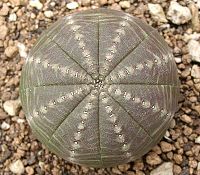
Influence of macroclimate and local conservation measures on taxonomic, functional, and phylogenetic diversities of saproxylic beetles and wood-inhabiting fungi
Sign Up to like & getrecommendations! Published in 2018 at "Biodiversity and Conservation"
DOI: 10.1007/s10531-018-1592-0
Abstract: Wood-inhabiting fungi and saproxylic beetles are threatened by habitat degradation. Our understanding of the importance of macroclimate and local factors determining their taxonomic diversity has increased, but determinants of functional and phylogenetic diversity are poorly… read more here.
Keywords: functional phylogenetic; saproxylic beetles; diversity; phylogenetic diversities ... See more keywords

Long-term experimental management in Swedish mixed oak-rich forests has a positive effect on saproxylic beetles after 10 years
Sign Up to like & getrecommendations! Published in 2019 at "Biodiversity and Conservation"
DOI: 10.1007/s10531-019-01736-5
Abstract: Secondary succession in protected oak-rich temperate forests reduces variation in habitats and leads to denser, shadier sites. Long-term experimental studies of the effects of conservation management alternatives are needed for such forests. Here we present… read more here.
Keywords: saproxylic beetles; term experimental; positive effect; long term ... See more keywords

Early-successional saproxylic beetles inhabiting a common host-tree type can be sensitive to the spatiotemporal continuity of their substrate
Sign Up to like & getrecommendations! Published in 2020 at "Biodiversity and Conservation"
DOI: 10.1007/s10531-020-02004-7
Abstract: Intensive forest management has drastically reduced the amount and diversity of dead wood resulting in population decline of saproxylic species. Forestry practices can also disrupt spatiotemporal continuity of dead wood habitats. We studied the effects… read more here.
Keywords: saproxylic beetles; spatiotemporal continuity; level; host ... See more keywords

The scale of saproxylic beetles response to landscape structure depends on their habitat stability
Sign Up to like & getrecommendations! Published in 2019 at "Landscape Ecology"
DOI: 10.1007/s10980-019-00857-0
Abstract: Forest management and disturbances cause habitat fragmentation for saproxylic species living on old-growth attributes. The degree of habitat spatiotemporal continuity required by these species is a key question for designing biodiversity-friendly forestry, and it strongly… read more here.
Keywords: saproxylic beetles; dispersal; landscape; landscape structure ... See more keywords

How does the replacement of native forest by exotic forest plantations affect the diversity, abundance and trophic structure of saproxylic beetle assemblages?
Sign Up to like & getrecommendations! Published in 2017 at "Forest Ecology and Management"
DOI: 10.1016/j.foreco.2017.09.026
Abstract: Abstract Native forest in central Chile has been increasingly replaced by exotic forest plantations. In particular, saproxylic beetles could be highly sensitive to exotic forest plantations due to the clear-cutting management decreases deadwood accumulation while… read more here.
Keywords: saproxylic beetles; diversity; forest plantations; saproxylic beetle ... See more keywords

Multiple uncertainties require a change of conservation practices for saproxylic beetles in managed temperate forests
Sign Up to like & getrecommendations! Published in 2018 at "Scientific Reports"
DOI: 10.1038/s41598-018-33389-9
Abstract: In Europe, intensive forest management has severely compromised the habitat of forest insects, especially saproxylic beetles, due to the removal of deadwood and veteran trees. The loss of insect diversity may disrupt ecosystem functioning and… read more here.
Keywords: saproxylic beetles; forest management; multiple uncertainties; conservation practices ... See more keywords

High‐resolution 3D forest structure explains ecomorphological trait variation in assemblages of saproxylic beetles
Sign Up to like & getrecommendations! Published in 2022 at "Functional Ecology"
DOI: 10.1111/1365-2435.14188
Abstract: Abstract Climate, topography and the 3D structure of forests are major drivers affecting local species communities. However, little is known about how the specific functional traits of saproxylic (wood‐living) beetles, involved in the recycling of… read more here.
Keywords: structure; morphological traits; variation; saproxylic beetles ... See more keywords